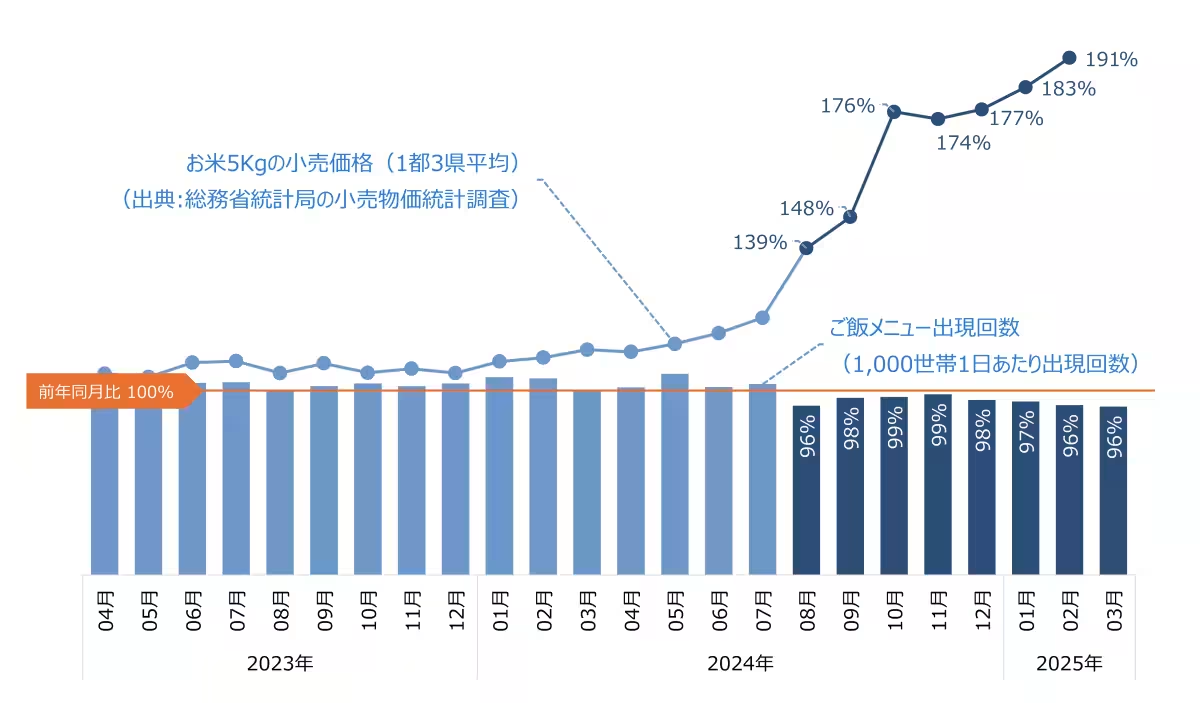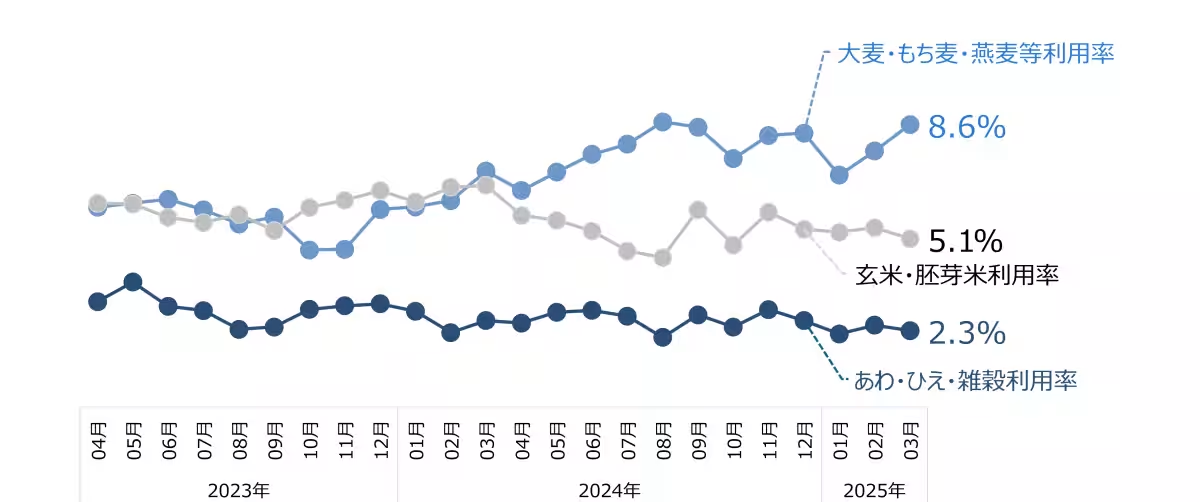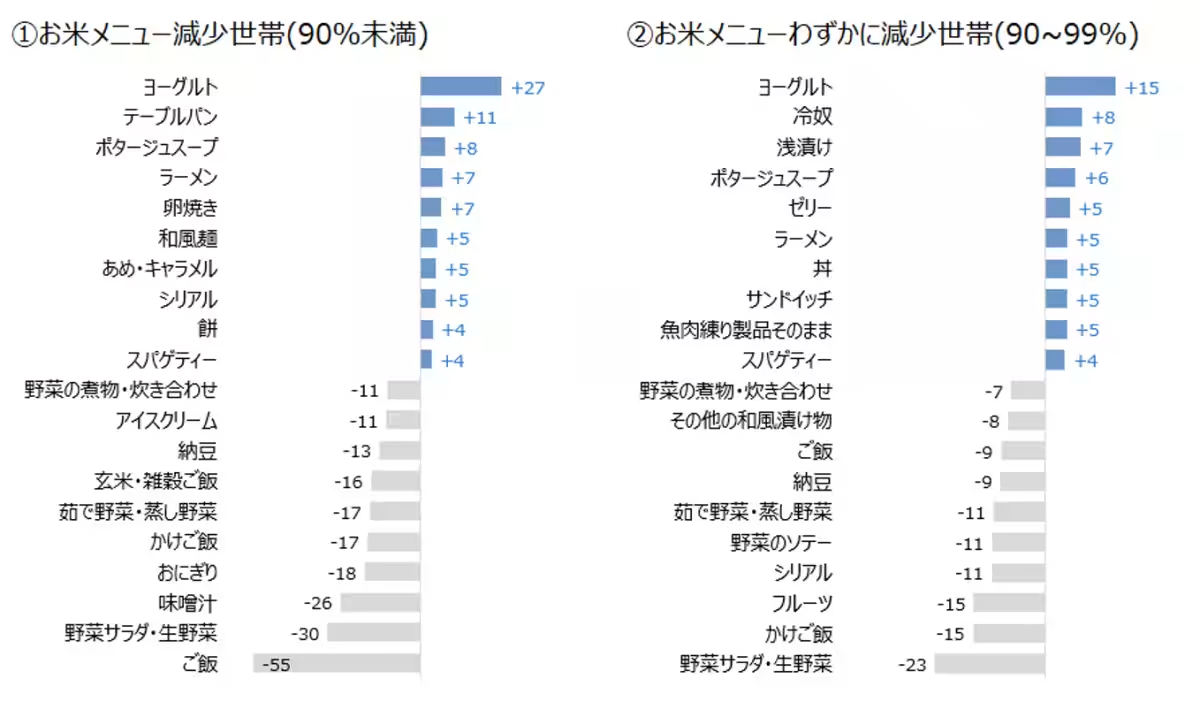

Unexpected Food Alternatives Rising as Households Reduce Rice Consumption in Japan
Introduction
The landscape of daily meals in Japanese households is changing dramatically as the consumption of rice, a staple food, continues to decline. According to a report from the Ministry of Internal Affairs and Communications in August 2024, the retail price for 5 kg of rice rose to 1.3 times higher than the previous year, coinciding with a drop in the frequency of rice dishes on dining tables. As this decline in rice consumption accelerates, what alternative foods are making their way into Japanese households?
Decline in Rice Dishes
Research conducted by LifeScape Marketing, based in Chiyoda, Tokyo, shows that 59% of households experienced a decrease in rice menu items compared to the previous year over a 15-month period from January 2024 to March 2025. Notably, 30% of these households reported a decrease of over 10%. The soaring cost of rice appears to be affecting consumers broadly across the nation.
When examining those households that reduced their rice consumption, the data reveals a significant increase in other staple food items, particularly noodles and bread. In households where rice dish frequency declined significantly, pasta consumption jumped by 10% while bread also saw a 2% increase. Although some households leaned towards noodles and bread as substitutes for rice, the quantity consumed still couldn't compensate for the reduction brought about by the rice shortage.
What Are People Eating Instead?
Analyzing the types of food that have gained popularity reveals a substantial shift away from traditional rice dishes. Items such as ramen and sandwiches have been acknowledged as replacements. Surprisingly, yogurt has also seen a notable rise in consumption as substitute food, leaving many questioning if this was simply a coincidence or indicative of a larger trend.
As the data shows, there are marked differences in meal types throughout the day. The frequency of rice dishes decreased most significantly during breakfast and lunch, suggesting that the majority of the population continues to regard rice as a preferred option at dinner time. In reviewing breakfast habits, it becomes evident that traditional dishes like rice balls and miso soup are being replaced with cereals and sandwiches, demonstrating a fundamental shift from traditional Japanese cuisine to more Western dietary influences.
Cooking Innovations
Not just limited to meal selection, cooking methods themselves are evolving. The data indicates that when rice is cooked, there's an increasing trend in combining it with grains like barley, millet, or oats. This change could either signify a move towards a healthier dietary choice with increases in dietary fiber or merely a strategy to stretch rice supplies.
Conclusion
While the rising costs of rice may dominate discussions about alternative food options, focusing on shifts in consumer eating patterns and preferences can unveil new benefits and alternatives. The study by LifeScape Marketing emphasizes that the changes in the Japanese dining scene reflect broader societal adjustments as households adapt to the changing economics of food.
As we continue to observe these trends, it is essential to understand the context of how these meal substitutions can influence public health, culinary practices, and even future market trends. Further analysis and exploration will shed light on the long-term implications of these dietary shifts.








Topics Consumer Products & Retail)










【About Using Articles】
You can freely use the title and article content by linking to the page where the article is posted.
※ Images cannot be used.
【About Links】
Links are free to use.